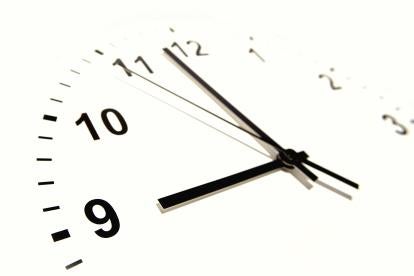As the clock struck midnight on December 31, 2016, employees across the United States were celebrating. While most were celebrating the coming of the New Year (or perhaps, more likely, good riddance to 2016), some employees were celebrating because January 1, 2017, brings with it a new allotment of FMLA leave days. If your employees fall into the latter category, perhaps it is time to consider changing your FMLA policy and procedures.
Section 200 of the Department of Labor’s FMLA regulations provides that employers may select one of four options to establish the 12-month period to be uniformly applied to all employees taking FMLA leave. 29 C.F.R. § 825.200(b). These four options are (1) the calendar year, (2) any fixed 12-month period (e.g., the employer’s fiscal year or the employee’s anniversary year), (3) the 12-month period measured forward from the first date the employee uses leave, or (4) the “rolling” 12-month period measured backward from the date the employee uses any FMLA leave. The Regulations provide that employers may select any one of these four methods as long as the method is applied consistently and uniformly for all employees. However, if you fail to designate one of these four options, then the Regulations obligate you to use the 12-month period method that is the most beneficial to the employee. Now is the perfect time to check your FMLA policy language and forms to ensure that you have properly designated one of these options in writing.
In selecting a manner to determine the 12-month period, it is important to understand that all four options are not created equal. While the first three options, all of which rely upon a “fixed” leave year, are generally easier for employers to administer, these options also allow employees to “stack” leave. For example, if your company has elected to calculate the 12-month period using the calendar year, then an employee who has been out of work on FMLA leave for the last 12 weeks of 2016 may be entitled to continue that leave for the first 12 weeks of 2017. By “stacking” leave around the turn of the calendar year, that employee can potentially receive 24 straight weeks of FMLA leave. In contrast to the first three options, the fourth option, also known as the “rolling” calendar year, eliminates the potential for the stacking of leave. However, the constantly moving 12-month period under this method can create challenges when tracking leaves of absence. In spite of the administrative challenges associated with using this method, most employers find that the benefits of using the “rolling” calendar method far outweigh those challenges.
The turn of the calendar year provides a great time to review your FMLA policies and procedures to make sure that they best meet your business needs. Should you determine that changes to your policies and procedures are necessary, it is important to keep in mind that you must give proper notice to your employees before any of those changes take effect, and at least 60 days notice is required if you change the method used to calculate the FMLA “12-month period.” 29 C.F.R. § 825.200(d)(1). If you change the 12-month period, you must also ensure that the transition to a new calculation method takes place in such a way that employees retain the full benefit of 12 weeks of leave under whichever method affords the greatest benefit to the employee. Here’s wishing you a Happy New leave Year!




 i
i


